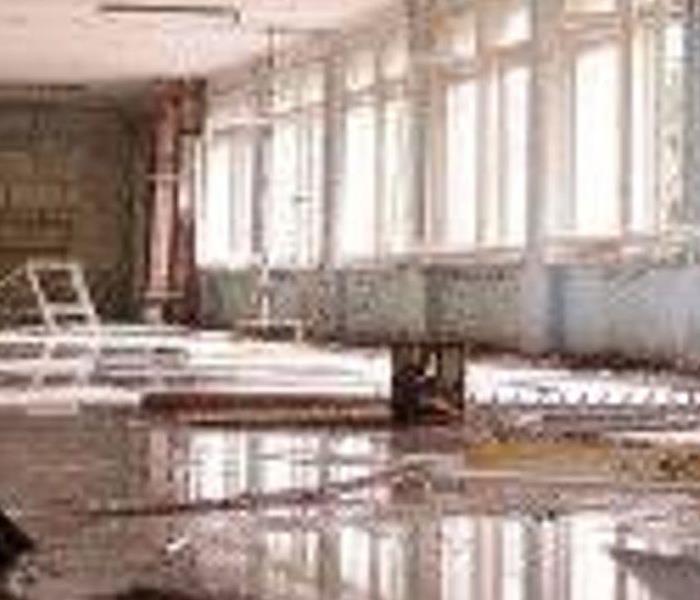Tips for preventing water damage at your business
4/6/2021 (Permalink)
1. Insulate exposed pipes
When temperatures drop during the winter, especially at night, exposed pipes are vulnerable to freezing. Plummeting temperatures or cold drafts can freeze water inside a poorly insulated pipe, creating pressure and ultimately causing the pipe to burst. A broken pipe can lead to costly flooding or even structural damage.
The best way to prevent frozen pipes is to ensure they’re insulated. Most hardware stores carry pipe insulation. The more insulation you use, the better protected your pipes will be.
2. Keep heat at sufficient levels
To prevent pipes from freezing, you’ll want to keep an eye on your business’s thermostat. Make sure the thermostat is never set lower than 50 degrees – even on weekends or when the building is vacant. Avoid significant changes between nighttime and daytime temperatures, which increases the risk of your pipes freezing. In addition, be sure to regularly replace batteries in thermostats to ensure they’re operating correctly.
3. Inspect gutters and drainage
Fallen leaves and other debris in gutters and downspouts can lead to water damage to the exterior and interior walls of a building. Regularly inspect your business’s gutters, downspouts, and drainage system, and remove any debris or buildup. Have gutters professionally cleaned on a regular basis to ensure water is draining properly and away from the building.
4. Clear your roof
Snow and ice accumulation on your business’s roof can result in weakened roofing materials and create “ice dams,” which prevent melted ice and snow from properly draining. Regularly remove snow and ice from your business’s roof to prevent structural damage. Know your roof’s load-bearing capacity, and periodically check to ensure that snow and ice aren’t accumulating beyond its weight limits.
5. Locate your shut-off valve
If a pipe breaks, you’ll need to act quickly. That means you should know the location of the main shut-off valve for your building’s water supply. Shutting off the main valve will temporarily cut the flow of water to the building, preventing flooding until you are able to fix the problem.
6. Seal cracks and gaps
Seal any cracks, holes, or other gaps in your building’s exterior and foundation to ensure that cold air doesn’t penetrate your building and warm air doesn’t escape. Caulk, weather stripping, and other sealants can be used to make your building more energy-efficient and reduce the risk of frozen pipes.





 24/7 Emergency Service
24/7 Emergency Service
